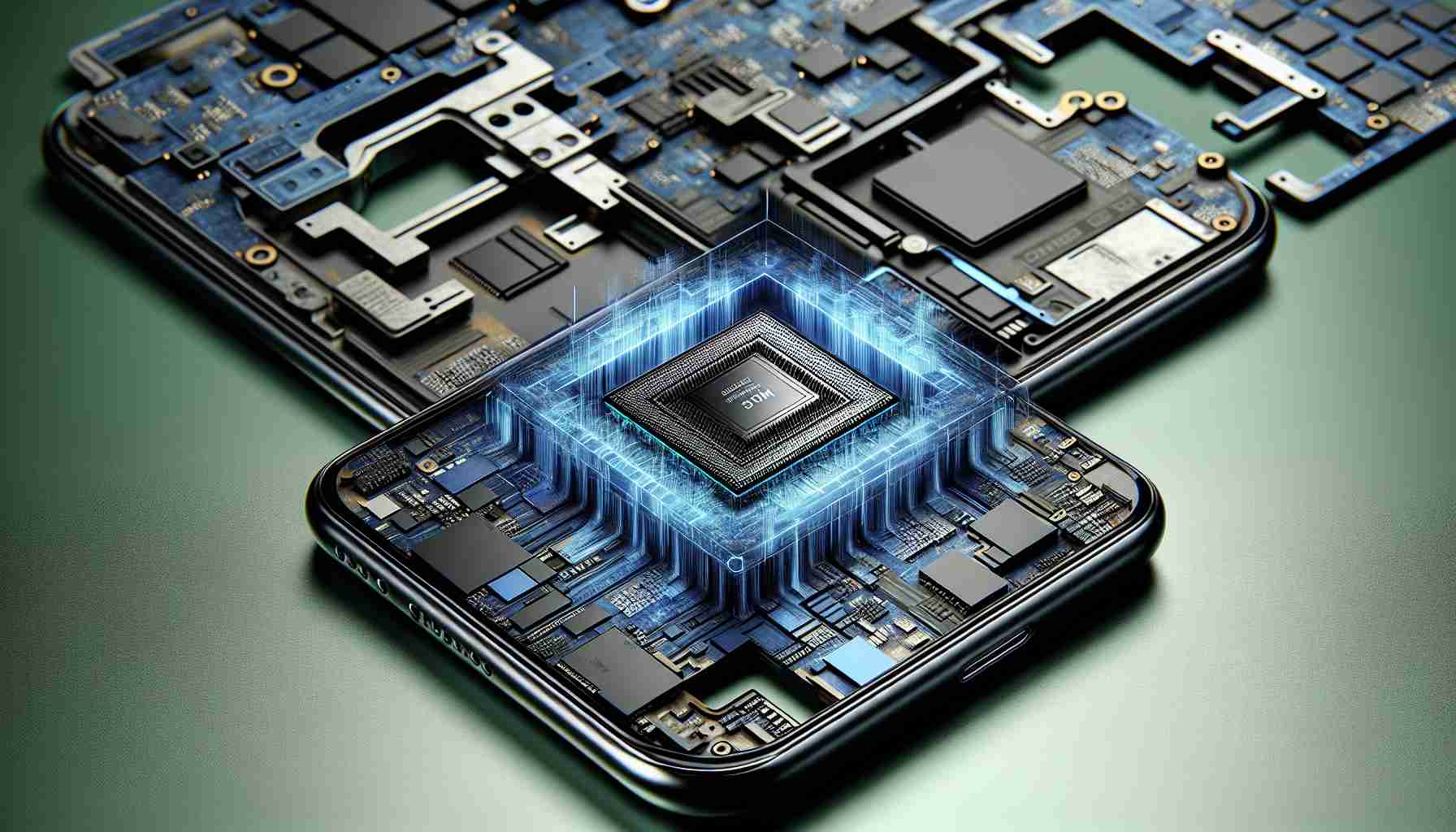Samsung Announces Advancement in Processor Technology for Next-Gen Smartphones
Samsung is set to revolutionize smartphone efficiency with its upcoming Galaxy S25 series which will be powered by the innovative Exynos 2500 chipset, utilizing the latest 3nm process technology. This significant advance suggests that the new phones will manage to offer impressive performance while being extremely conservative with battery usage.
The introduction of the Exynos 2500 processor is regarded as a massive stride forward for Samsung’s next-generation hardware. Although specifics were not disclosed in the initial press release, strong speculations indicate the utilization of the 3nm process in Samsung’s Exynos 2500 chip. This chipset is expected to make its debut in the Galaxy S25 series.
Recent reports from Business Korea have hinted that the Exynos 2500, built with the 3nm process, is slated for mass production. The chipset will grace the Galaxy S25 series, potentially outpacing the upcoming Snapdragon 8 Gen 4 chip, which is also anticipated to use a 3nm process. It’s posited that the Exynos 2500 may offer superior power efficiency, while Qualcomm’s chip might provide higher performance.
Experts in the industry predict that the Exynos 2500 may outperform Qualcomm’s latest processors in terms of power efficiency, showcasing Samsung’s focus on energy-saving advancements. However, real-world tests by consumers and experts will be necessary to draw any definitive performance comparisons.
The forthcoming Exynos 2500, anticipated to utilize Arm’s Cortex-X5 core architecture, has the potential to boost performance even further. With the Cortex-X5’s improvements in performance and efficiency, the Exynos 2500 is poised to be highly competitive.
Samsung’s 3nm process technology not only sets a new benchmark for the Galaxy S25 series but also for other smartphone processors in general. The competition with Qualcomm’s Snapdragon 8 Gen 4 chip promises more potent and efficient devices for consumers, signaling an exciting new era in smartphone technology.
In conclusion, Samsung and Synopsys’s 3nm process technology will be implemented in the production of the Exynos 2500, intensifying the performance and efficiency of the Galaxy S25 series. Predictions and reports from industry analysts reinforce Samsung’s ambition in this field and foretell a heated race with Qualcomm. The anticipation grows as we eagerly await what the new generation of processors will deliver.
Significant Questions and Answers:
Q: What makes the 3nm process technology significant for smartphones?
A: The 3nm process technology is significant because it allows for the creation of chips with smaller transistors. This means more transistors can fit on a single chip, resulting in increased performance and energy efficiency. The smaller the transistors, the less power they need to operate and the less heat they generate, leading to better battery life and performance.
Q: How does the Exynos 2500 chipset potentially compare to Qualcomm’s Snapdragon 8 Gen 4 chip?
A: While the Exynos 2500 is reported to focus on superior power efficiency, Qualcomm’s Snapdragon 8 Gen 4 chip might offer higher performance. However, real-world testing will be necessary to see how they actually compare once they are available in devices.
Q: What is ARM’s Cortex-X5 core architecture mentioned in the article?
A: ARM’s Cortex-X5 core architecture is likely a reference to ARM’s Cortex-X custom core program, which allows for high performance and efficiency improvements in processors. While Cortex-X5 has not been officially detailed, it would represent next-generation architecture building upon the existing Cortex-X series principles, like the high-performance Cortex-X2 core used in previous chipsets.
Key Challenges and Controversies:
– Ensuring the real-world battery life and energy efficiency meet the claims of improved performance without causing overheating issues.
– Gaining market share and consumer trust, especially in regions where Qualcomm’s Snapdragon series is dominant.
– Addressing any potential production challenges associated with the new 3nm process, including yields and costs.
Advantages:
– Increased energy efficiency leading to longer battery life.
– Enhanced performance capabilities can provide a better user experience.
– Keeping at the forefront of innovation may provide Samsung a significant competitive edge.
Disadvantages:
– Adoption of a new technology can lead to initial teething problems that need to be addressed.
– Likely higher costs associated with the initial production and development, which may affect the pricing of the final products.
– Potential customer resistance if tied to specific Galaxy models limiting choice.
For further information on Samsung, visit their official website at Samsung. If you’re interested in ARM’s technology, which likely contributes to the Exynos 2500 architecture, you can read more on their main domain, accessible at ARM. For insights and updates regarding Qualcomm’s chipset technologies, you can refer to their main website at Qualcomm. Please note that URLs are provided as per the current knowledge and they are valid primary domains of the respective organizations.
